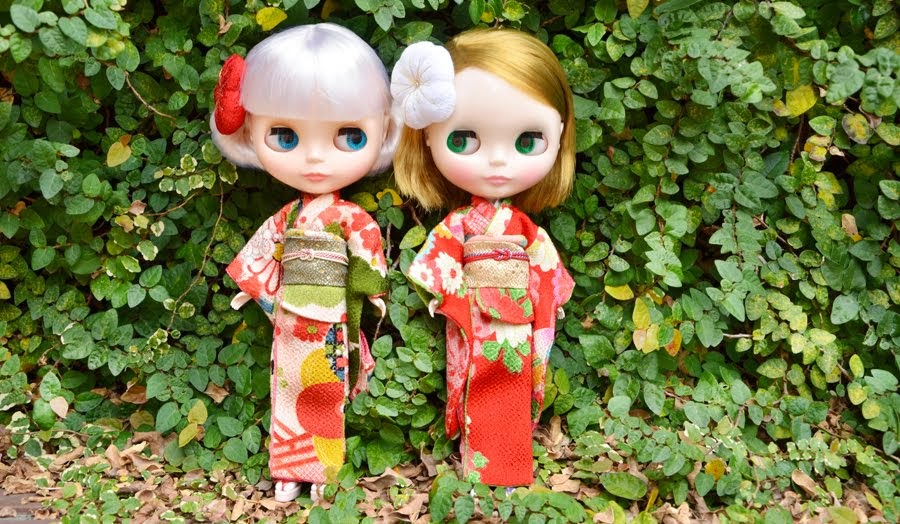Essay by: Isaiah
Child
It
isn’t uncommon for Anime fans to enjoy toy collecting as a side hobby. It’s
thrilling and satisfying to see one’s favorite character in 3D. Statues and
pose-able toys gives fans fresh data to work with, allowing them to let their
imagination run wild. It quite literally adds a whole new dimension to the
character. Toys like Revoltech and Figma are suited for dynamic action poses,
while companies like Kaiyodo create statues that present a dynamic approach to
a memorable scene, or proposing enticing “what-if” situations. However, most of
these examples present a facsimile of the character from the original material,
or a very specific alter-version. It wouldn’t make sense to actively want
products that knock-off the character, unless of course that is what is
interesting to the collector. What if two very distinct interests crossed over
into a hybrid figure? Would that
product make sense thematically and aesthetically? Is this product from both
realms, or is it turned into one, singular entity?
Both
Blythe and NGE have experienced
similar trials and tribulations. As Blythe grew and coined the term “fashion
doll,” more and more copycats were being produced with an identical motive.
Dolls like Pullip and Odekochan vied reap the benefits of this new cultural
niche. Blythe satisfied toy collectors that had an itch that could not be
satisfied with conventional dress-up dolls. Barbie and Rika-chan, the previous
queens of the doll world, had to learn to adapt to the new environment that
Blythe pioneered. By giving full control to the consumers and encouraging
customization, Blythe became more than just a doll; she became an entity.
Blythe fans are an eclectic bunch. From one end of the spectrum to the other,
the range of subcultures her fans are involved with is staggering. Blythe is
the name of the doll, but not every Blythe doll they own is “Blythe.” She is
not just a doll with an extra set of clothes, but a catalyst for fashion and
style. To those who love her, she is an icon. She has a name, but with every set
of clothing and every customized eye chip, she becomes a completely different
entity from the last. She is Audrey Hepburn on her wildest escapades, she is
Rihanna on stage with the strobe lights flickering, she is Kuriyama Chiaki with
bloodlust in her eyes. If it weren’t for the fans, for their creativity and
their camaraderie, Blythe would never have come this far. There is a reason why
Blythe is doing so well more than 30 years after her first release.
After working on Nadia: The Secret of Blue Water for two years, NGE creator and director Anno Hideaki became increasingly
depressed, unable to relate with his core audience, the so-called “otaku.” He
considered their state of being as a sort of self-imposed autism, people who
are intentionally unable to connect unless it is with material that enlivens
their hedonistic world views. He created NGE
as a sort of snare to catch them off guard, and to make them question their
state of being. In order to do so, he needed bait.
Ayanami
Rei was a revolutionary character. Her seemingly cold exterior would be widely
imitated and caricatured for a decade after, becoming firmly ingrained in pop
culture. She could be described as stoic, unfeeling, or even “doll-like,”
although the last description is specifically contested by Ayanami Rei. Anno
Hideaki describes her central theme to be “Thanatos”, or the desire for death.
She is a clone of Ikari Shinji’s mother who has despairingly accepted her
disposable nature. There are hundreds of others just like her floating in a tank
who could replace her at a moments notice. Without a second thought, she will
selflessly sacrifice herself if the lives of her friends are at stake. Although
she is absolutely terrified of being expendable, she considers this to be her
best method to connect with others, especially Ikari Shinji.
The
gap between her calm exterior and passionate, hard-working character gripped
the hearts of her first fans and didn’t let go. As speculation and imaginations
ran wild as to who she actually was, how she thought and felt, the character
called Ayanami Rei seemed to lift herself out of the screen and become the
entity called Ayanami Rei. She was obsessed over and talked about, customized
and affecting each person who she came in contact with. Many characters have
been based on her in tribute, parody, or just plain copying. She became a muse,
a goddess, and the dream girl of many adolescent boys and girls of that decade.
She was a role model showing the will to protect, to connect, to change -- an
icon for those with a cry for help hidden in their chest.
Fans
of both Blythe and Ayanami share a trait: they both want their voices to be
heard. Their love of their icon fuels their creativity, whether it’s to create
a new pattern for a Lolita dress for Blythe, or to build garage kit’s of
Ayanami in the entry plug of EVA Unit 00. They want their love to be seen, and
to be able to have conversations with their comrades. They want to share and to
spread the word. People can say that Blythe in Ayanami Rei’s plug suit or the
Revoltech Ayanami Rei, is a collaborative product simply meant to create
another doll and exploit the name of the Evangelion
franchise. Her fans understand though, that this is more than just a cross-over
product, but a rare moment when two worlds overlap to create a single entity.
That she is both Blythe and Ayanami Rei at the same time.
Disclaimer:
↓
The views, opinions and positions expressed by the authors
and those providing comments on these blogs are theirs alone, and do not
necessarily reflect the views, opinions or positions of CWC, Junie Moon or
Blythedoll.com.





No comments:
Post a Comment